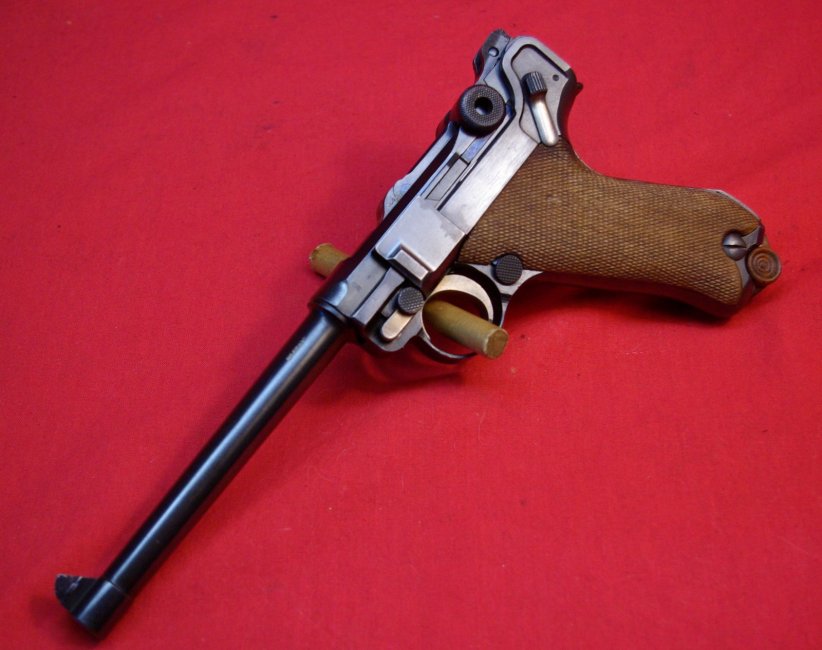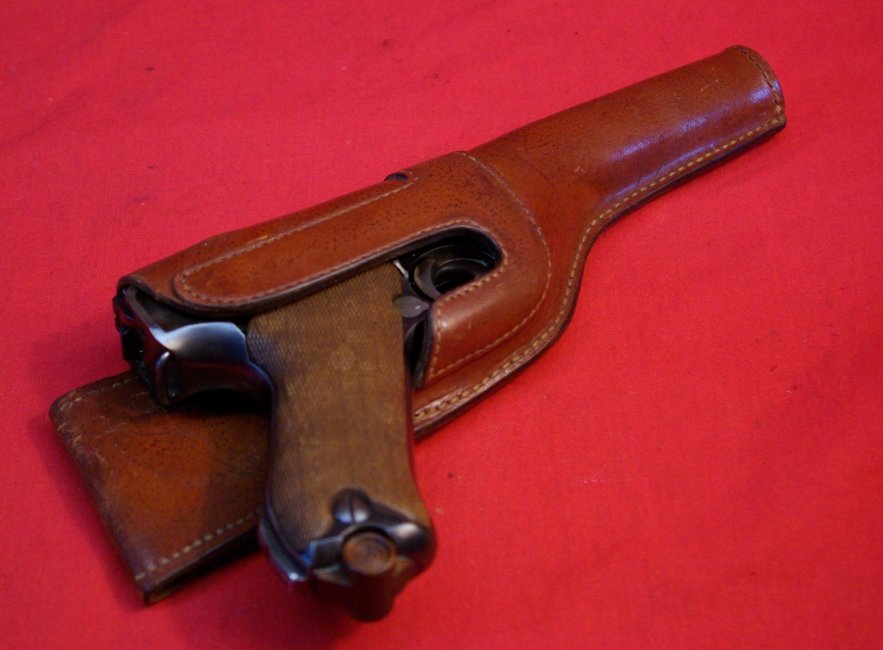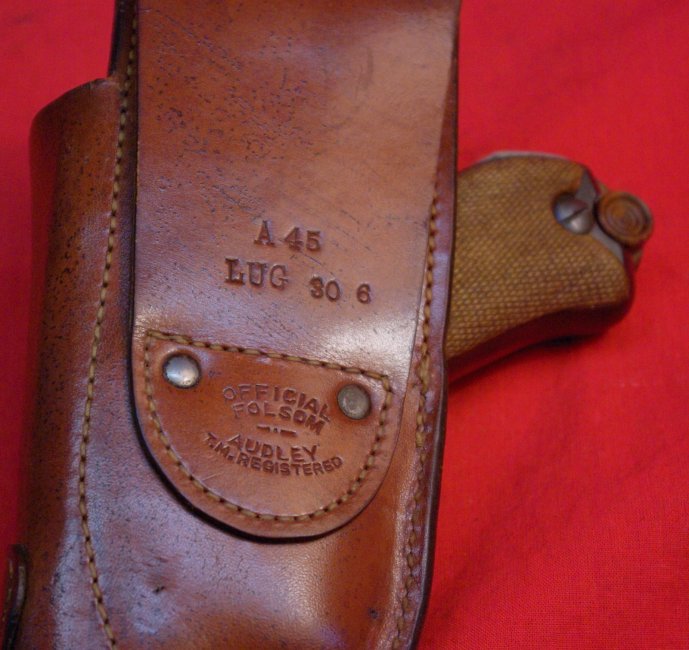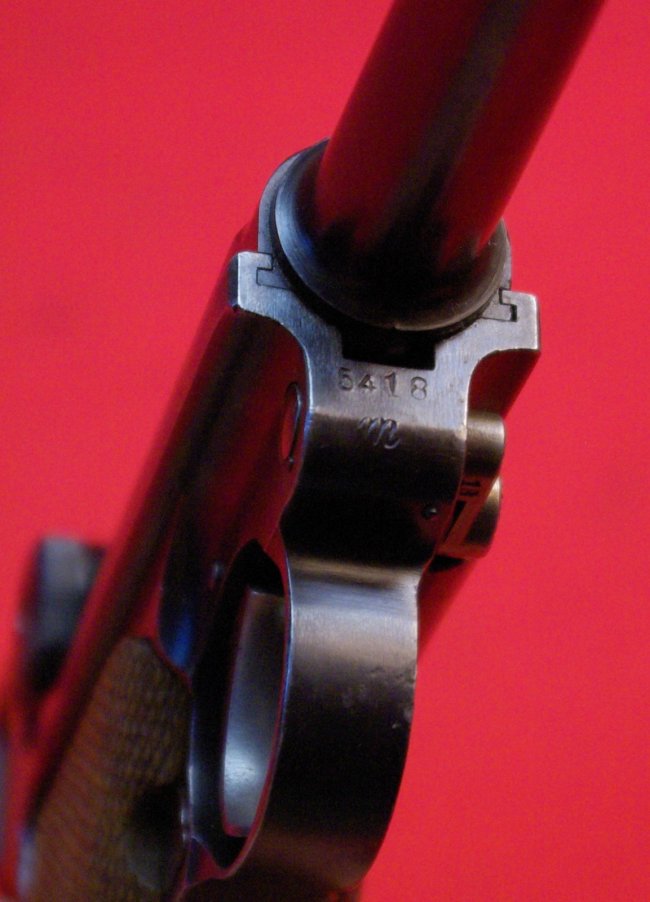mawkie
C&R Whisperer
-Been on pins and needles waiting what seemed like forever for this to arrive. Took 5 weeks to ship as the auction house lost my FFL. Resent and 3 days later the BBT is dropping off this beautiful Commercial Navy Luger from 1923. Absolutely stole this as the auction listed it as refinished. Where they got that idea from have no clue as the finish is original. I was able to track it down by SN in the Navy Luger list where it was marked as chambered in 9mm. The auction house had listed as .30 Luger. So it was up in the air until it arrived and it's in .30 Luger. One of the best buys I've had in years.
-Back in the early 1920's Germany was in shambles. Runaway inflation had destroyed the economy and DWM was desperate to keep the doors open. So Lugers were sold commercially and many were exported to the US. As to this commercial Navy, the best estimate is that approximately 1,000 were built with around 250 recorded in collector's records. -This is the later 1914 version of the iconic L04. A quick take down has the few marked parts matching. Grips are un-numbered. Trigger pull is, honestly, one of the worst I've experienced in a Luger. Heavy and mushy, not Swiss quality for sure. "Germany" export marked on the left side of the barrel.
-When I won the bid I knew that the only holster I wanted for it was an Audley. But the 6" version is duces hard to find. In the end it was Simpson Ltd who had one and lucky me the consignor had recently dropped the price to $475 which is as good as it gets for these, especially for one in such good condition. I jumped at the opportunity and it arrived well before the pistol!
-Back in the early 1920's Germany was in shambles. Runaway inflation had destroyed the economy and DWM was desperate to keep the doors open. So Lugers were sold commercially and many were exported to the US. As to this commercial Navy, the best estimate is that approximately 1,000 were built with around 250 recorded in collector's records. -This is the later 1914 version of the iconic L04. A quick take down has the few marked parts matching. Grips are un-numbered. Trigger pull is, honestly, one of the worst I've experienced in a Luger. Heavy and mushy, not Swiss quality for sure. "Germany" export marked on the left side of the barrel.
-When I won the bid I knew that the only holster I wanted for it was an Audley. But the 6" version is duces hard to find. In the end it was Simpson Ltd who had one and lucky me the consignor had recently dropped the price to $475 which is as good as it gets for these, especially for one in such good condition. I jumped at the opportunity and it arrived well before the pistol!
Attachments
-
 IMGP9965.JPG243.1 KB · Views: 94
IMGP9965.JPG243.1 KB · Views: 94 -
 IMGP9962.JPG226.1 KB · Views: 95
IMGP9962.JPG226.1 KB · Views: 95 -
 IMGP9963.JPG371.3 KB · Views: 91
IMGP9963.JPG371.3 KB · Views: 91 -
 IMGP9964.JPG234.5 KB · Views: 91
IMGP9964.JPG234.5 KB · Views: 91 -
 IMGP9968.JPG210.5 KB · Views: 90
IMGP9968.JPG210.5 KB · Views: 90 -
 IMGP9969.JPG90.3 KB · Views: 93
IMGP9969.JPG90.3 KB · Views: 93 -
 IMGP9970.JPG214.5 KB · Views: 92
IMGP9970.JPG214.5 KB · Views: 92 -
 IMGP9971.JPG253.3 KB · Views: 80
IMGP9971.JPG253.3 KB · Views: 80 -
 IMGP9972.JPG151.5 KB · Views: 81
IMGP9972.JPG151.5 KB · Views: 81 -
 IMGP9973.JPG243.3 KB · Views: 91
IMGP9973.JPG243.3 KB · Views: 91
Last edited:

